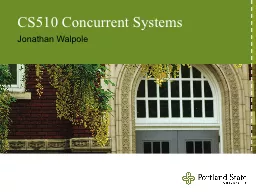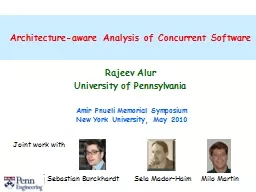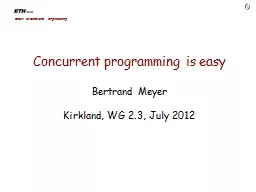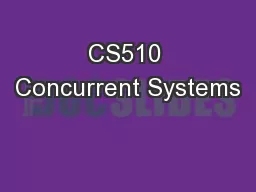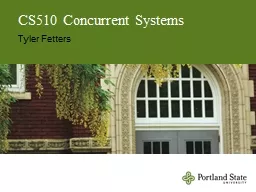PPT-CS510 Concurrent Systems
Author : test | Published Date : 2016-06-05
Jonathan Walpole Linux Kernel Locking Techniques Locking In The Linux Kernel Why do we need locking in the kernel Which problems are we trying to solve What implementation
Presentation Embed Code
Download Presentation
Download Presentation The PPT/PDF document "CS510 Concurrent Systems" is the property of its rightful owner. Permission is granted to download and print the materials on this website for personal, non-commercial use only, and to display it on your personal computer provided you do not modify the materials and that you retain all copyright notices contained in the materials. By downloading content from our website, you accept the terms of this agreement.
CS510 Concurrent Systems: Transcript
Download Rules Of Document
"CS510 Concurrent Systems"The content belongs to its owner. You may download and print it for personal use, without modification, and keep all copyright notices. By downloading, you agree to these terms.
Related Documents

